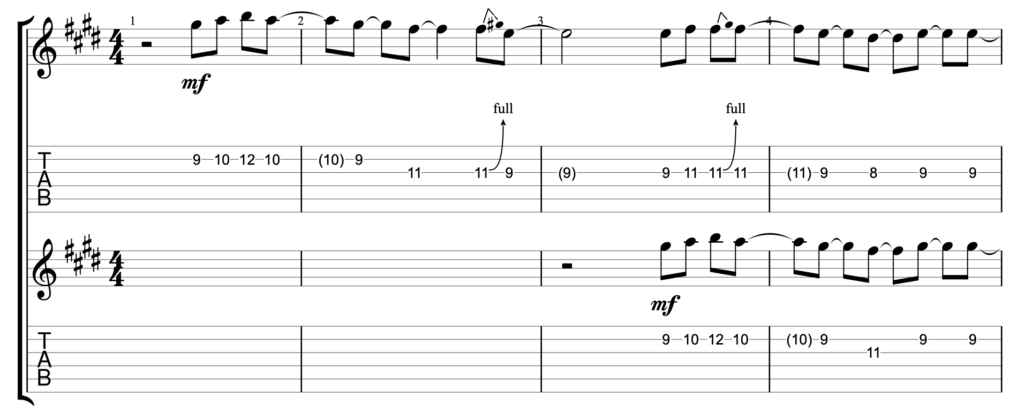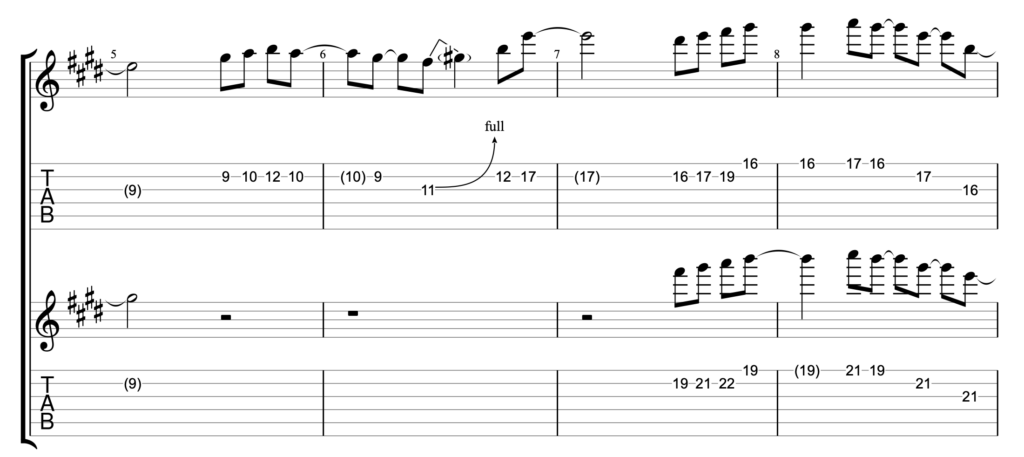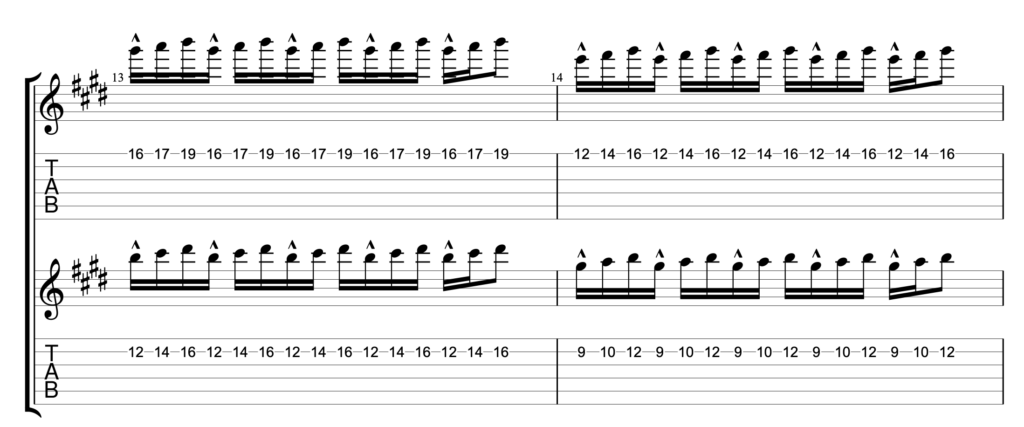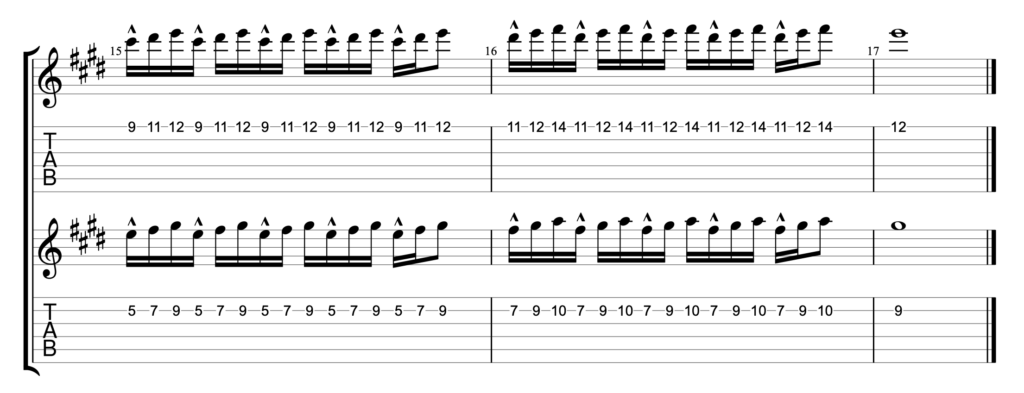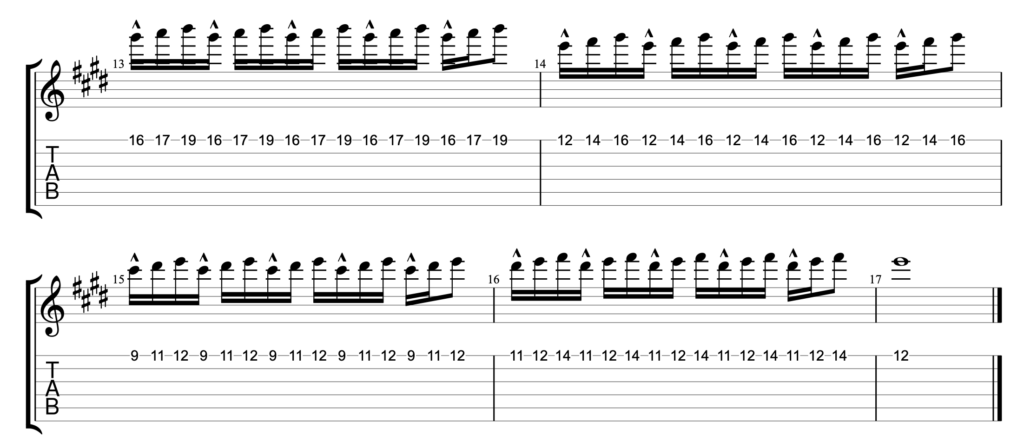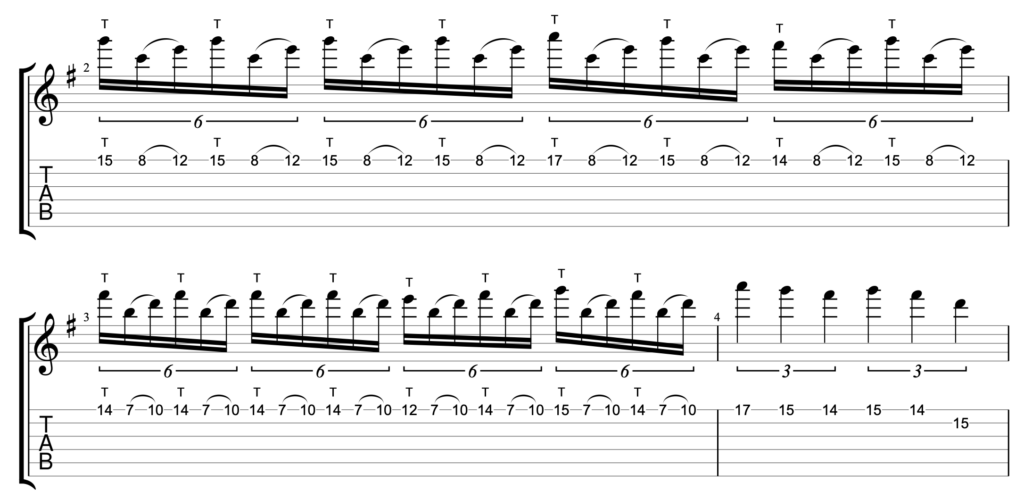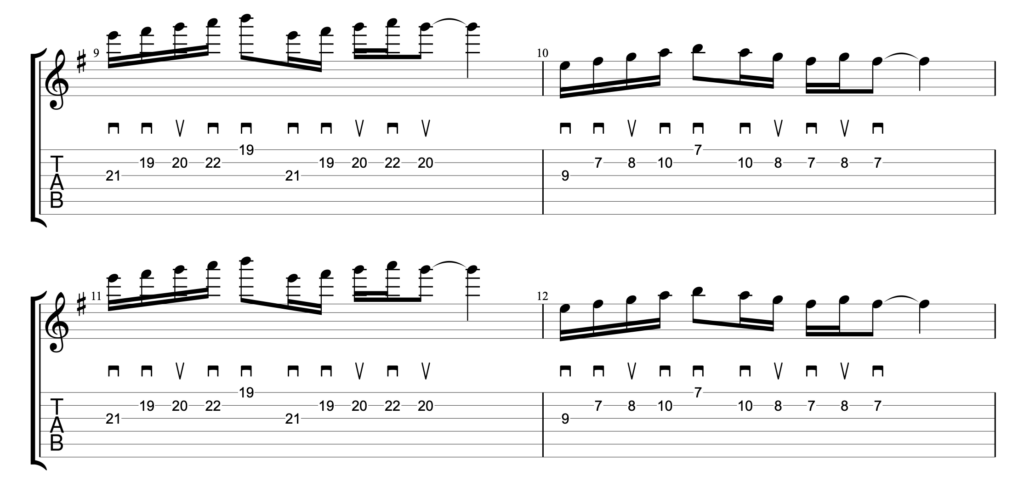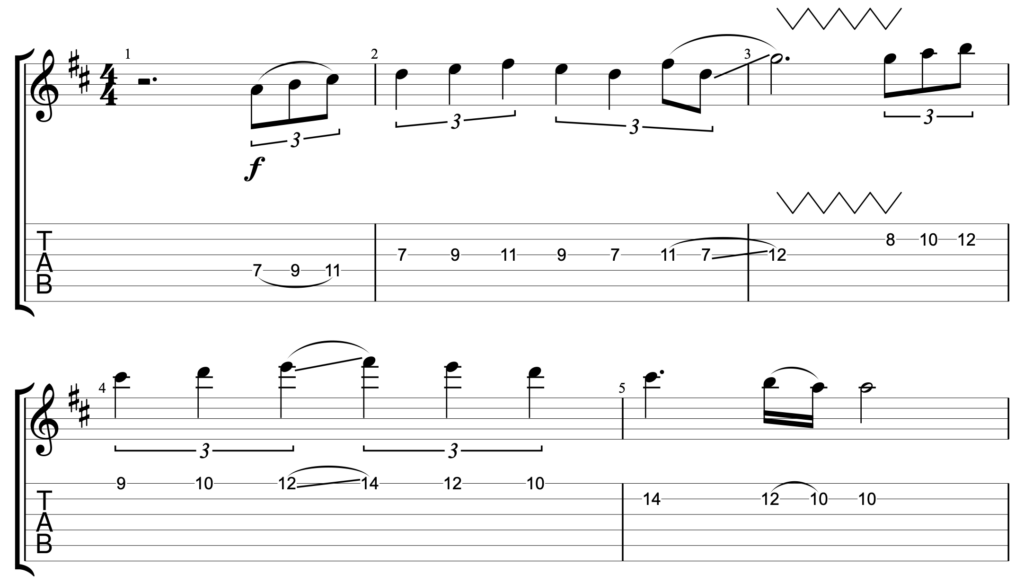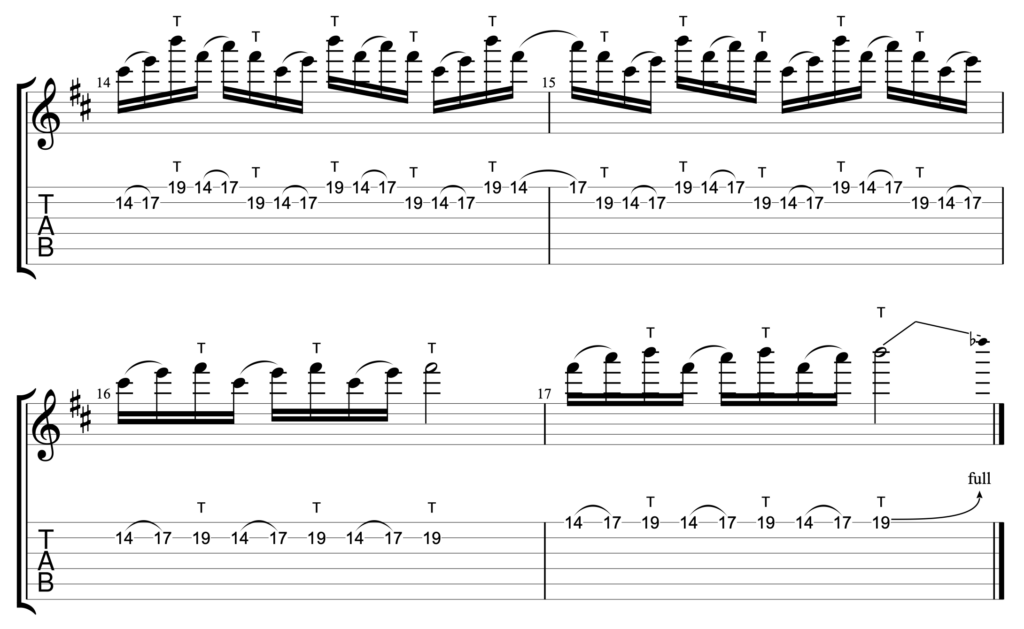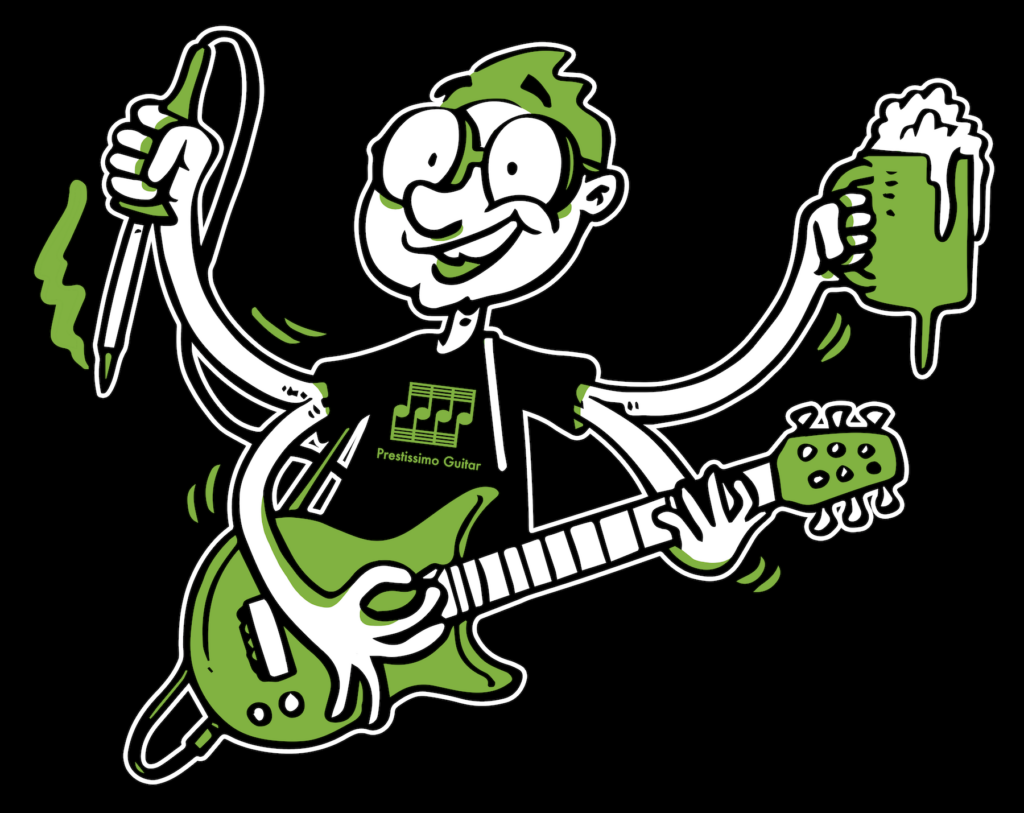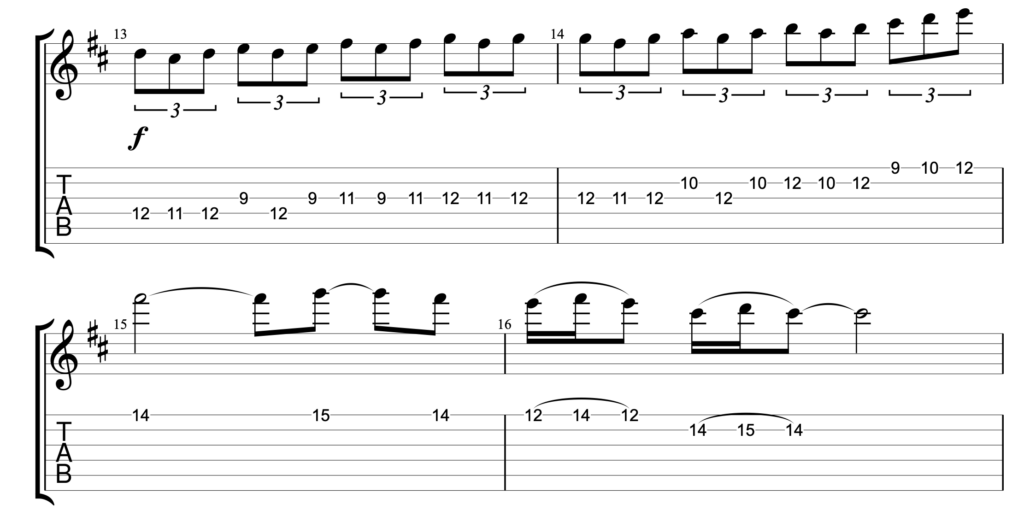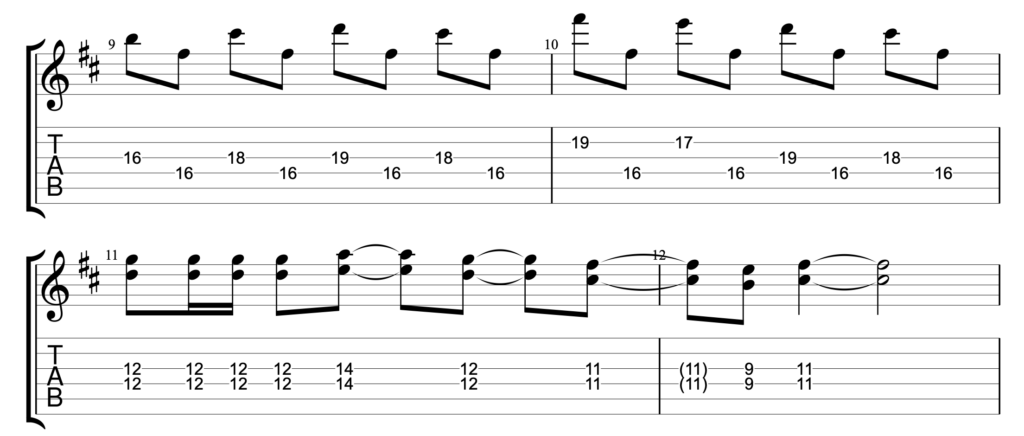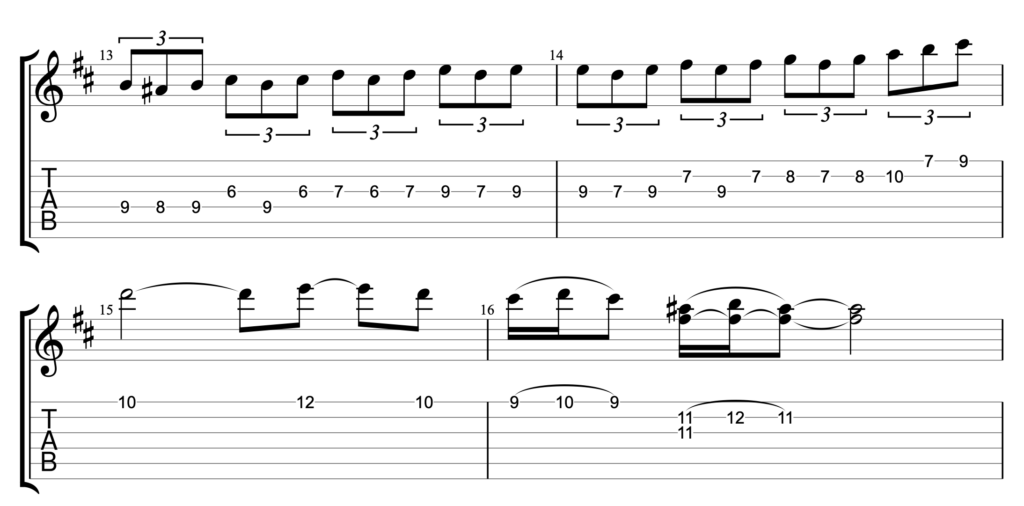This article is part of the series “Level Up! – 42 guitar solos for a better sex life”
Meaning of the Solo
Do you know how spring time in Denmark feels? – Neither do I
Tonal analysis
Harmonic analysis: For this, I write the chords again side by side and add the thirds and fifths in the lines below:
Akkord | F# | B | G | D | A | Terz | A# | D | B | F# | C# | Quinte | C# | F# | D | A | E |
Now I sort the tones in the order of their occurrence: B C# D E F# G A A A#
You see we have a little problem because A and A# occur together, so we cannot determine the key to 100%.
It could be a natural minor (A) as well as a harmonic minor (A#). Bummer, what do we do now?
We choose a natural minor and only bring the A# when the F# major chord comes in. Done!
Bars 1 to 4
We start with an F# major arpeggio at the 9th fret and play to the target note D (third of Bm) in bar 2.
Then we bring in some nice syncopation again. Target notes are G and D (root and fifth of G major).
As well as F# and G (third and fourth of D major), and C# (third of A major).
Bars 5 to 8
We repeat the theme from bars 1 and 2, but spice up the target tone D with a trill (fast hammer-on/pull-off).
Then we increase the tension with the 12th position. Target notes D as before and E (fifth of A major).
Bars 9 to 10
A few smooth bendings over F# major with the target notes F# and C#, over B minor F# and D.
Bars 11 to 12
Then alternate picking with the complete B minor scale.
Bars 13 to 14
Triolic sweep picking with F# major arpeggio, and a small run with target F#.
Bars 15 to 16
Then it continues in triplets with B minor down to the target note B in bar 16. And that’s it
Guitar Pro
Download GuitarPro file Danish spring
Don’t own a copy of GuitarPro yet?
I’d be very happy if you buy it via one of my affiliate link:
Guitar pro Version 8 (Amazon Affiliate)
Guitar Pro Version 8 (Thomann Affiliate)







